Lesson 1: Your Medicine. Their Drugs.
Prescription medicines taken properly help heal illness, relieve pain, control disease and bring balance to your life. But when others take your medications, they can be very dangerous.
An alarming trend is emerging. Every day, more than 9,263 children and young adults begin experimenting with prescription drugs. These drugs range from pain relievers and depressants to stimulants and over-the-counter (OTC) medicine.
2.8 million Americans abuse prescription drugs

Sources of information for this guide are numbered after each statement or chart. The numbers align with the list of sources on page 12.
Some disturbing facts:
- One in four teens abused prescription drugs.
- 3.1 million 12 to 25 year olds used OTC cough and cold medications at least once to get high.
- Prescription drugs are the #1 choice among 12-13 year olds.
- 13 is the mean age of the non-prescribed use of sedatives and stimulants.
- One in seven boys and one in five girls has shared or borrowed a prescription drug.
- Nearly one in 10 high school seniors admit abusing pain relievers.
- Girls age 12-17 are more likely than boys to misuse OTC medications, but the trend reverses with 18- to 25-year-olds.
Lesson 2: Your nightstand. Their drug supplier.
What’s in your medicine cabinet? On your nightstand or the kitchen counter? In your purse? Naturally, you keep prescription medicines and cold and cough remedies handy for you to take when needed. But, they are also handy for teens to take without you knowing it.
Adolescents believe that since the medicines were prescribed by a doctor, they provide an inexpensive, legal and “medically safe high.” In the case of OTC remedies, most children have been given these medicines by their parents for common illnesses, such as fevers, colds and coughs. So, teens believe it is safe to take these drugs whenever they choose. The proliferation of pharmaceutical ads on television as well as the Internet and peer misinformation helps contribute to this attitude.
Source of Pain Relievers for Misusers
Ages 12 and older

More disturbing facts:
- More teens have been offered prescription drugs than other illegal ones, except marijuana.
- Four out of 10 teens believe prescription and OTC medicines are less addictive and dangerous than street drugs.
- 7.3 million young people believe there’s “nothing wrong” with using non-prescribed medicines periodically and that parents “don’t care as much if you get caught.”
- More than one-third say they feel peer pressure to take prescription or OTC drugs.
Lesson 3: Your rationale. Their reasons.
We often ask: Why? Teens give many reasons for abusing prescription and OTC drugs, such as wanting to “fit in,” relieve depression and anxiety, help them cope with life’s stresses, sleep better or increase their alertness and concentration power so they can do better in school. Some want to control their weight with stimulants. Others want to self-medicate to relieve pain. They want to experiment. They want to be accepted by their peers. They want to escape reality or make their reality more bearable.
The abuse of OTC drugs by teens is largely with cough and cold medicines that contain dextromethorphan (DXM) to get high. Some young people are also abusing laxatives, diuretics and diet pills to control their weight. Some herbal or “natural” products can be just as dangerous as diet pills because they act like a stimulant on the nervous system.
The most commonly abused prescription drugs are:
1. Pain relievers (opioids). These powerful medications are used primarily to treat pain and can be found in some cough medicines:
Types:
Morphine
Oxycodone
Codeine
Others
Prescribed For:
Severe Pain
Sever Pain
Coughs, mild pain
Pain
Relieve diarrhea
Sample Brand Names:
adian, MS Contin, Oramorph SR
OxyContin, Roxicodone, Percodan, Percocet
Tylenol with Codeine
Robitussin with Codeine
Darvon, Dilaudid, Demerol, Ultram
Lomotil
Appeal to teenagers Can produce quick, intense feeling of pleasure followed by a sense of well being and a calm drowsiness
2. Depressants, also known as tranquilizers and sedatives:
Prescribed For
Anxiety, tension, sleep disorders, severe stress reactions, panic attacks
Sample Brand Names
Mebaral, Nembutal, Seconal, Soma, Phenobarbital, Klonopin, Xanax, Valium, Librium, Halcion, Ativan, Rozerem, Ambien, Lunesta
Appeal to teenagers Causes euphoria or relaxation and sleep
Drugs Most Frequently Used by 12 Graders

3. Stimulants, or uppers:
Prescribed For:
Respiratory problems, sleep disorders (narcolepsy), attention-defecit / hyperactivity disorder (ADHD), short term treatment of obesity, depression
Sample Brand Names:
Adderall, Ritalin, Dexedrine, Focalin, Methylin, Conerta
Appeal to teenagers Increases alertness, attention and energy, feeling of extreme joy, gives them energy to stay awake, increases concentration, become more talkative, lose weight
4. Over-the-counter drug abuse with dextromethorphan (DXM), which is called “robo-tripping” by teens:
Used to Treat:
Cough, colds, sinus pressure (with DXM), Sleep Problems
Sample Brand Names:
Alka-Seltzer, Contac, Coricidin, NyQuil, Robitussin, Sudafed, Theraflu, Vicks, Nytol, Benadryl, Unisom, Tylenol PM,
Used to Treat:
Weight control:
Laxatives, diuretics
Diet Pills, with ingredients, such as Ephedrine, caffeine, laxatives
Ex-lax, Dulcolax, MiraLax
Alli, Apidexin, Phenphedrine, Liporexall, DecaSlim, Colovox
Appeal to teenagers Creates a high, relieves pain, reduces anxiety, suppresses appetite, helps them sleep or lose weight, gives them an edge in sports or school
If you suspect your teen is using drugs, do not wait to act. The Substance Abuse & Mental Health Services Administration has a listing of treatment centers in your area. (www.findtreatment.samhsa.gov or 1-(800) 662-HELP (4357).
Lesson 4: Your lifesaver. Their lifetaker.
When your doctor prescribes medicine for you, the effects are closely monitored. But when teenagers abuse medicines that are prescribed for someone else, no one is monitoring their dosage or frequency of use. They can become addicted, poisoned or even die from an overdose.
All too often, teens combine prescription or OTC drugs with other substances, like alcohol or marijuana, which can lead to dangerous consequences. And, sometimes they attend “pharm or rainbow parties” where various prescription medications are dumped into a bowl and randomly ingested.
Why should families be concerned?
- More people die of drug overdose than from car crashes or guns.
- Death by overdose involving prescription drugs have quadrupled since 1999.
- 1.5 million people 12 and older received treatment for prescription drugs in 2013.
Watch for these signs and symptoms
Drug:
Short-Term Effects of Abuse:
Long-Term Effects of Abuse:
Pain relievers (opioids)
Physical side effects: relief from pain, lack of energy, drowsiness, constriction of the pupils, flushing of the face and neck, nausea, constipation, vomiting, slowed breathing, nightmares
Psychological side effects: anxiety, impaired judgment, inability to concentrate and learn, apathy, agitation, depression
Addiction, physical dependenceparanoia, hallucinations, dementia
Severe withdrawal symptoms when teen stops taking the drug, including deep depression and suicidal thoughts
Need to take more of the drug or a combination of drugs to produce the same high, possibly leading to overdose
Higher risk of graduating to heroin
Depressants
Physical side effects: loss of coordination, dilated pupils, slurred speech, relaxed muscles, shallow breathing, sluggishness, fatigue, dizziness, drowsiness, fever, hyperactivity, visual hallucinations
Psychological side effects: poor concentration, feelings of confusion, disorientation, impaired judgment and memory, lowered inhibitions, rage, hostility, depression, amnesia, paranoia
Addiction, dependence
Severe withdrawal symptoms
Need to take larger doses to achieve the same effects
Shallow breathing, clammy skin, weak and rapid pulse, seizures, overdose, coma
Stimulants
Physical side effects: decreased appetite, loss of coordination, collapse, increased heart and respiratory rates, elevated blood pressure, dizziness, tremors, headache, Ḁushed skin, chest pain, excessive sweating, vomiting, abdominal cramps
Psychological side effects: restlessness, delusions, hostility, irritability, insomnia, anxiety, agitation, nightmares
Addiction, high fever, convulsions, heart failure, overdose
Paranoia, aggressiveness, extreme anorexia, thinking problems, visual and auditory hallucinations, delusions, panic, suicidal tendencies, severe dental problems
Over-the-Counter Drugs
Physical side effects: nausea, headache, blurred vision, dizziness, vomiting, loss of consciousness, numbness of fingers and toes, loss of coordination, abdominal pain, irregular heartbeat, aches, seizures
Psychological side effects: impaired judgment, restlessness, euphoria, cold flashes, dizziness, diarrhea
Addiction, insomnia, panic attacks, psychosis, high-blood pressure, damage to nerves, muscles and tissues in large intestine, coma
If you suspect your teen has overdosed on any of these drugs, seek medical help immediately.
Lesson 5: Your solutions. Their protection.
Quite frequently young people merely open the medicine cabinet and there before them is a variety of drugs available for the taking: pain pills for post surgery; sleeping pills from an overseas airplane trip; cough medicine from last season’s flu. The time to act is now. You are the key to your child’s drug-free future.
Take the following preventative steps:
- Remove drugs from your medicine cabinet and hide them, lock them up or take them out of your house.
- Safeguard all medicines that have to remain at home by monitoring quantities and controlling access.
- Take inventory by writing down the names and amounts of medications you currently have and regularly check to see if anything is missing.
- If your child is on prescribed medication, monitor the dosages and refills. Set clear rules, such as not sharing and always following proper dosages.
- Warn your youngsters that taking prescription or OTC drugs without a doctor’s supervision can be just as dangerous and potentially lethal as taking street drugs.
- Supervise your child’s Internet use: many pharmacy sites are not regulated and will sell your child medications without prescriptions.
- Properly dispose of old, expired or unused medicines in the trash. Call your local Sheriff’s or police department for local “take-back” collection information. DO NOT flush medications down the drain or toilet, unless the label indicates it is safe to do so.
Take the pledge to protect your child and spread the word. www.lockyourmeds.org
Be Aware. Don’t Share.® Lock Your Meds.®
Sources:
- Substance Abuse and Mental Health Services Administration – National Survey on Drug Use and Health, 2021 Calculated from Figure 24.
- U.S. Drug Enforcement Administration, 2007 http://www.justice.gov/dea/concern/prescription_drug_fact_sheet.html
- Substance Abuse and Mental Health Services Administration – National Survey on Drug Use and Health, 2006
- Office of National Drug Control Policy, Prescription for Danger, January 2008;
- Substance Abuse and Mental Health Services Administration – National Survey on Drug Use and Health, 2007
- Office of National Drug Control Policy, Teens and Prescription Drugs, February 2007;
- National Institute on Drug Abuse, Prescription Drug: Abuse and Addiction, http://www.drugabuse.gov/drugpages/prescription.html;
- Parents. The Anti-Drug, http://www.theantidrug.com/ http://kidshealth.org/teen/drug_alcohol/drugs/prescription_drug_abuse.html
- The Medical Letter, Treatment Guidelines, Vol. 43, March 2001; Vol. 4, November 2006; Vol. 5, April 2007; Vol. 6, April 2008; Vol. 50, December 2008; Vol. 7, March 2009;
- National Institute of Drug Abuse, University of Michigan, Monitoring the Future survey, 2006;
- White House Drug Policy Street Terms: http://www.whitehousedrugpolicy.gov/streeterms/;
- Sharing Prescription Medication Among Teenage Girls: Potential Danger to Unplanned/Undiagnosed Pregnancies.Pediatrics, May 2003; 111: 1167 – 1170.


